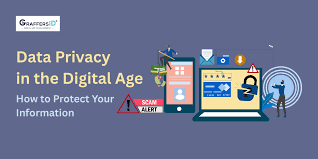
In today’s hyper-connected world, where data flows constantly through devices, apps, and networks, the question of privacy in the digital age has become more urgent than ever. By 2025, personal information is collected, analyzed, and shared on an unprecedented scale—raising concerns about how much control individuals truly have over their digital footprints.
Is privacy still possible, or has it become a relic of the past? Let’s explore the challenges, evolving protections, and ways to reclaim privacy in a connected world.
1. The Challenge of Digital Privacy
Every click, swipe, and interaction online generates data. This information is:
- Collected by social media platforms, advertisers, and service providers.
- Used to personalize experiences but also to target ads and influence behavior.
- Shared with third parties, sometimes without clear consent.
- Vulnerable to breaches, leaks, and surveillance.
The sheer volume and complexity of data flows make traditional notions of privacy difficult to maintain.
2. Privacy Risks in Everyday Life
Common privacy threats include:
- Data tracking and profiling by websites and apps.
- Location monitoring through smartphones and connected devices.
- Social engineering and phishing attacks exploiting personal information.
- Government surveillance under national security programs.
- Unauthorized data sharing by companies or hackers.
These risks impact individuals’ autonomy and security.
3. Legal and Regulatory Landscape
In response, many regions have introduced laws to protect digital privacy:
- The General Data Protection Regulation (GDPR) in the European Union sets strict rules for data use and user consent.
- The California Consumer Privacy Act (CCPA) gives residents rights over their personal data.
- Other countries are adopting similar frameworks, and new regulations continue to evolve.
Compliance requires transparency, data minimization, and user empowerment.
4. Technologies to Enhance Privacy
Advances in technology offer tools to protect privacy:
- End-to-end encryption keeps communications secure from interception.
- Decentralized identity systems give users control over their data.
- Privacy-focused browsers and search engines limit tracking.
- Anonymization and differential privacy techniques protect data while enabling analytics.
Users and organizations can leverage these tools to safeguard information.
5. The Role of Individuals
Personal responsibility remains vital:
- Being aware of privacy settings and permissions.
- Using strong, unique passwords and multi-factor authentication.
- Avoiding oversharing on social media.
- Regularly updating software and devices.
- Supporting privacy-respecting companies and policies.
Digital literacy empowers users to make informed choices.
6. Balancing Privacy with Innovation
Privacy concerns must be balanced with the benefits of data-driven innovation:
- Personalized services and smart technologies rely on data.
- Public safety and healthcare advancements use data insights.
- Transparent, ethical data practices build trust and accountability.
Striking this balance is a key challenge for the digital future.
Final Thoughts
Privacy in the digital age faces unprecedented challenges, but it is not impossible. Through stronger laws, better technology, and conscious user choices, individuals can reclaim control over their data.
As we navigate an increasingly connected world, protecting privacy requires vigilance, innovation, and collaboration to ensure our digital rights endure.
